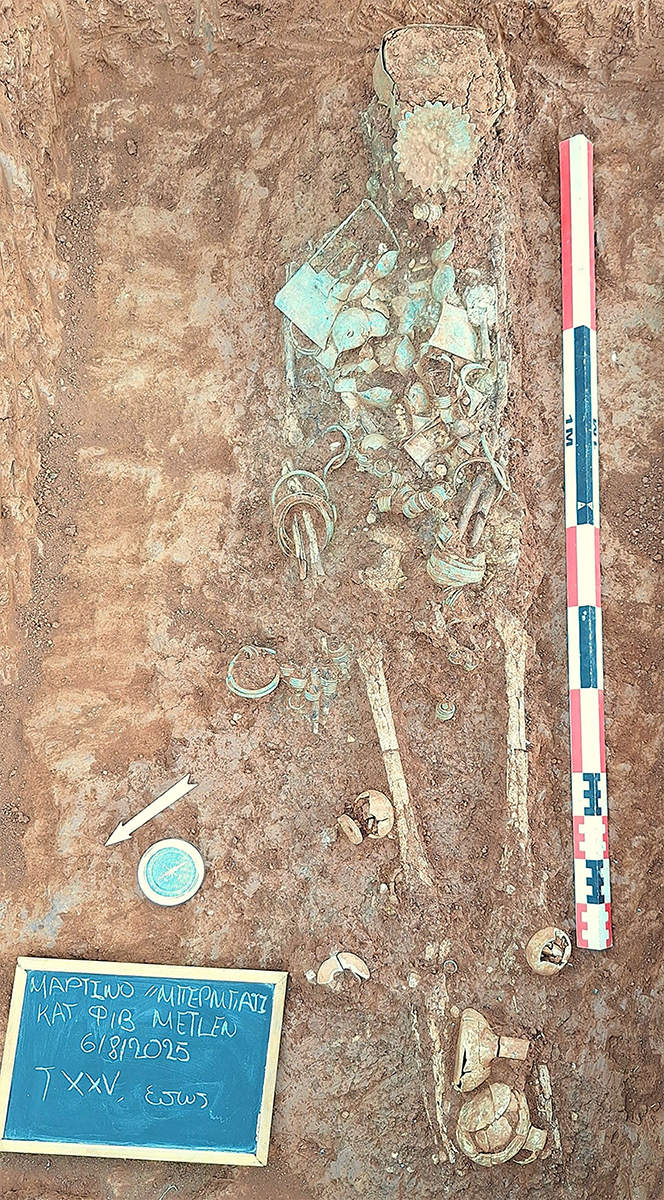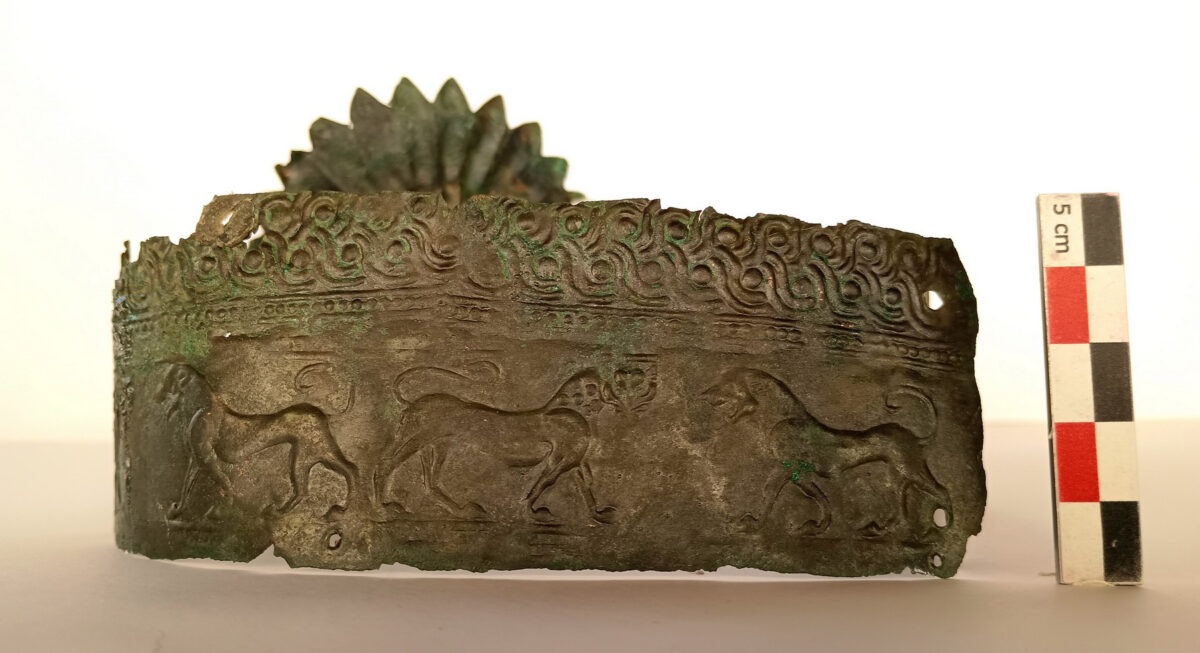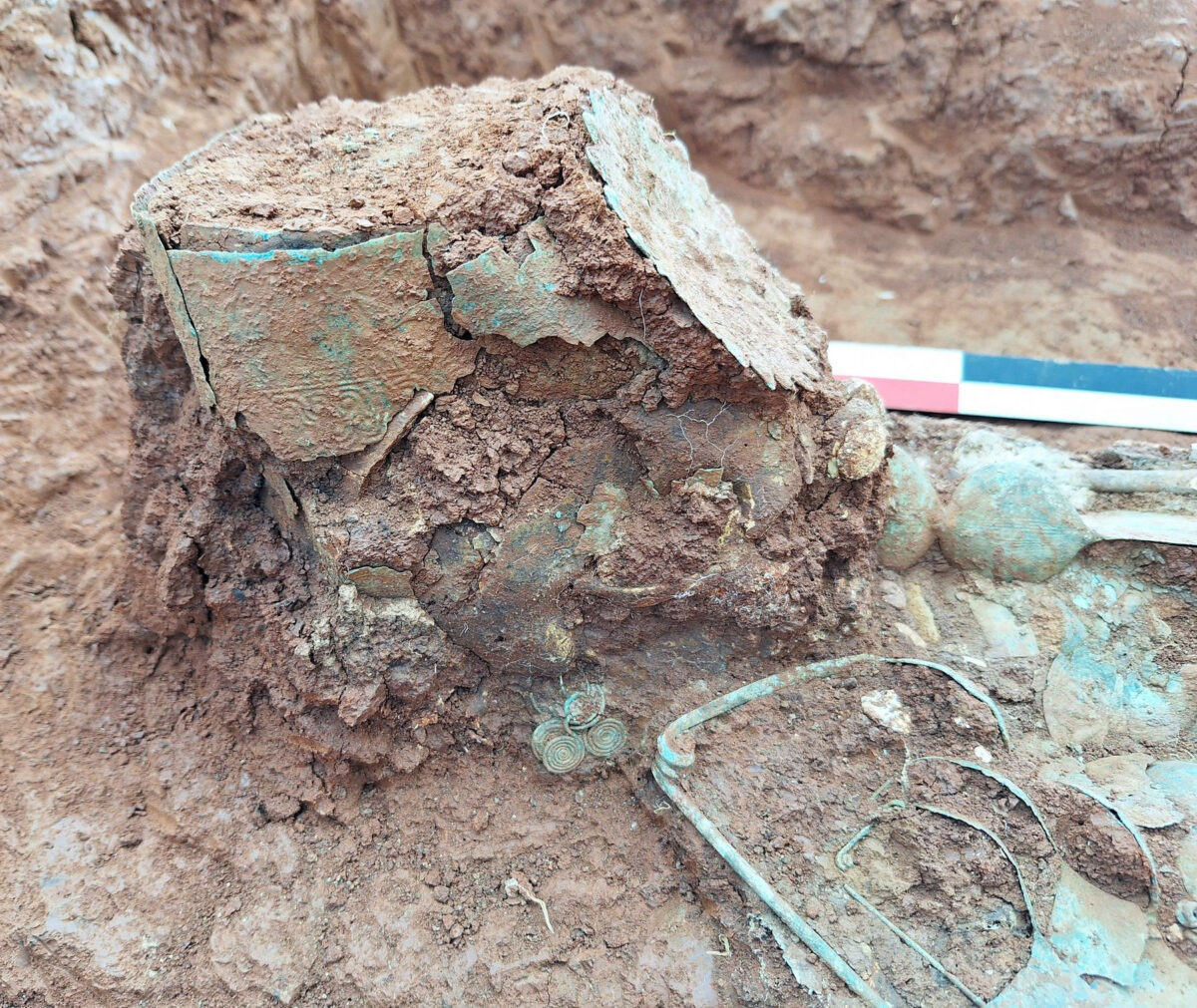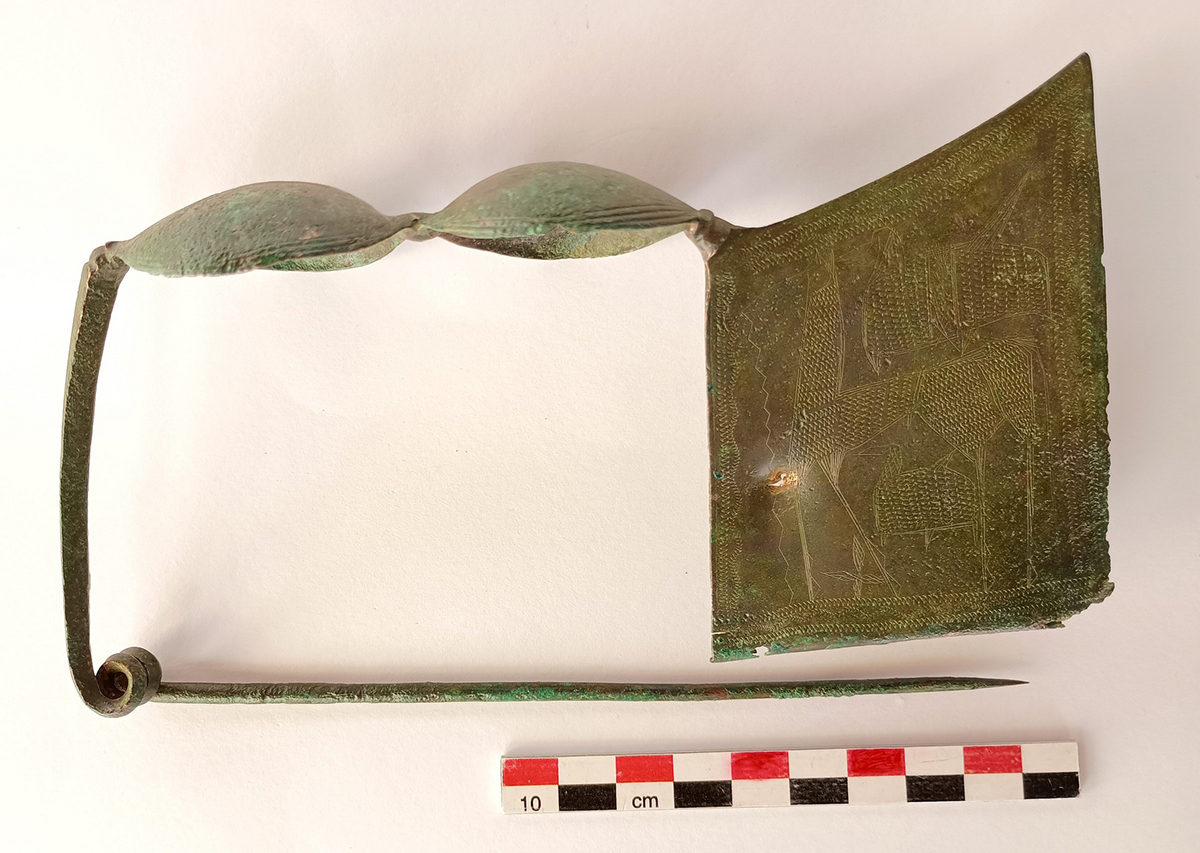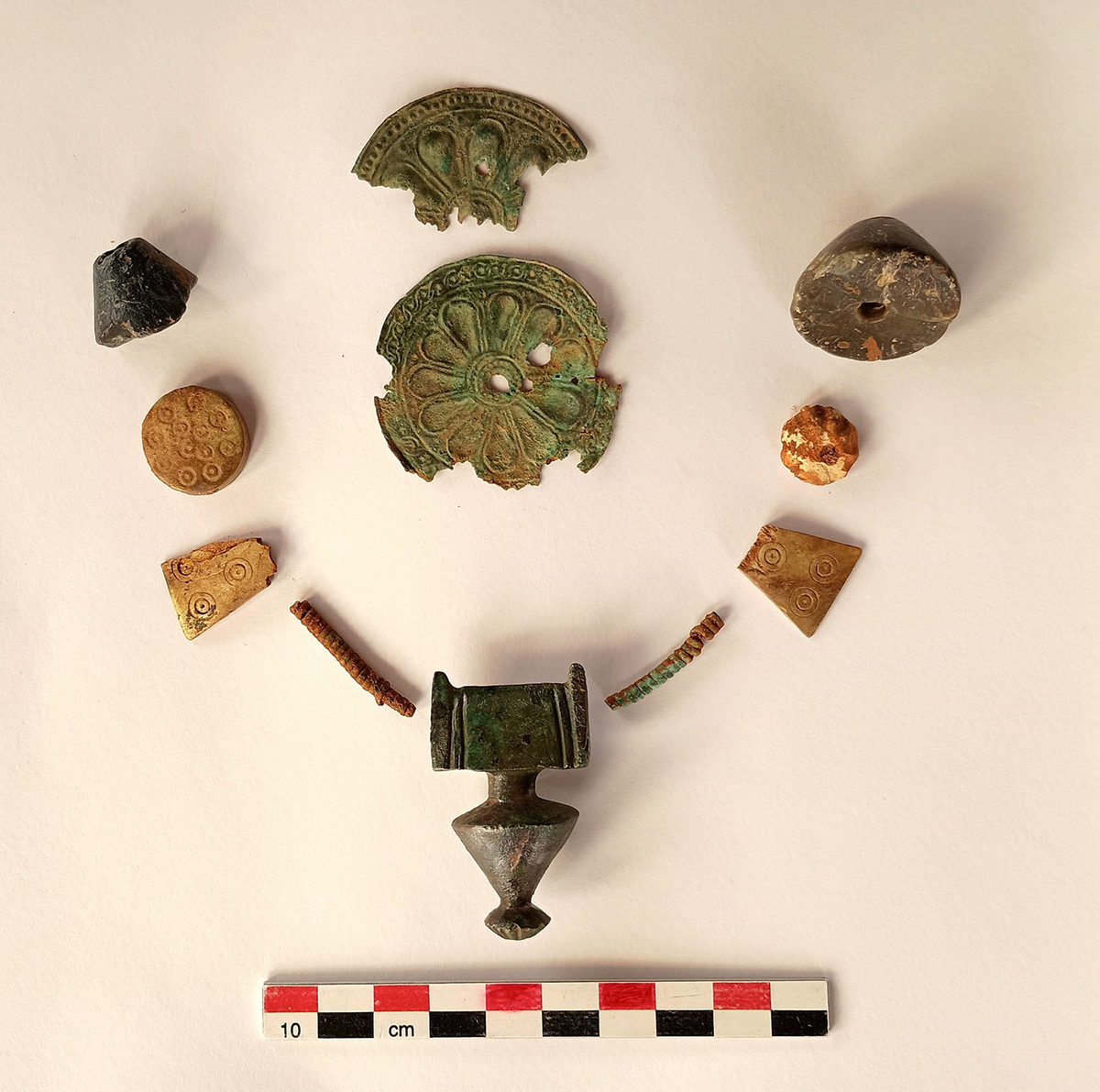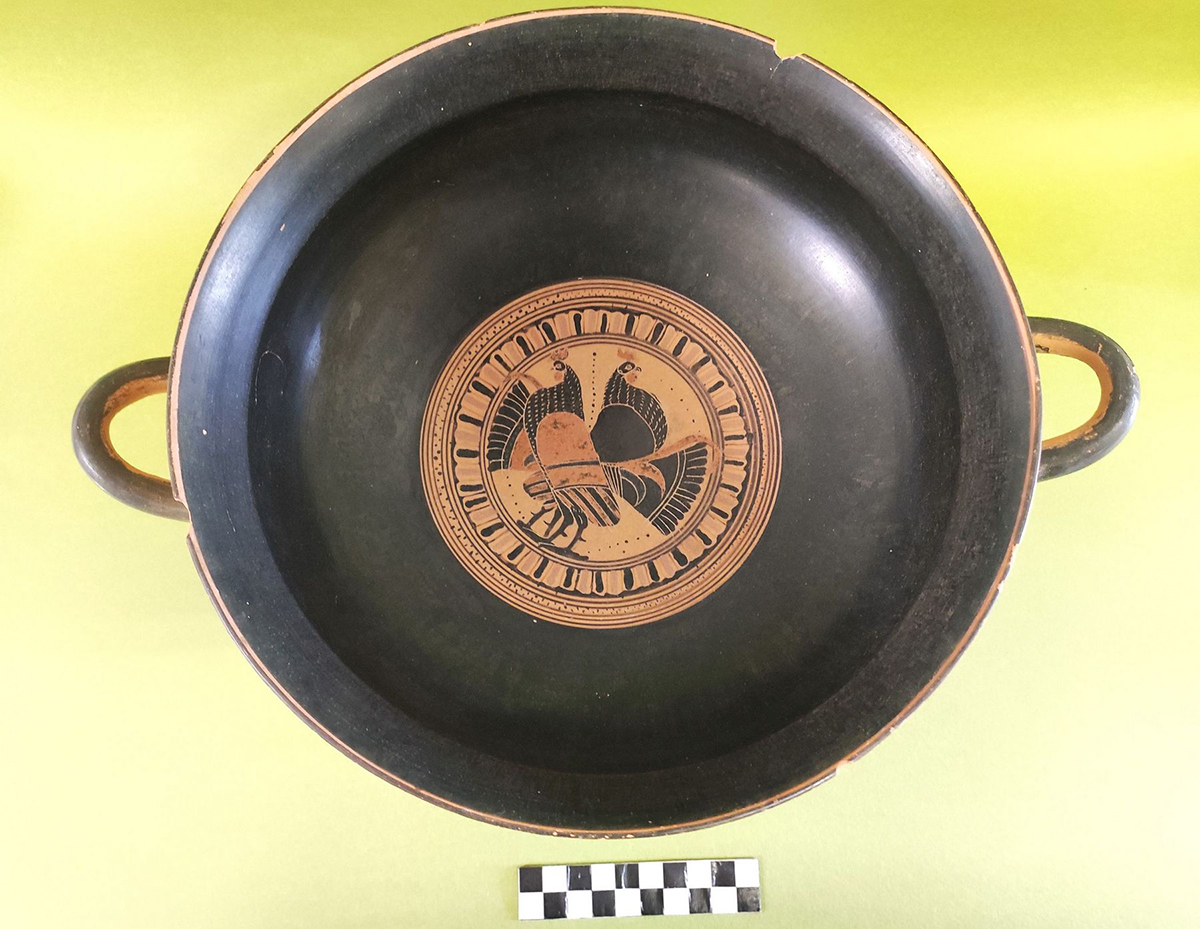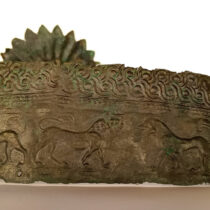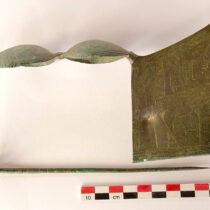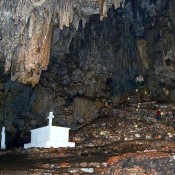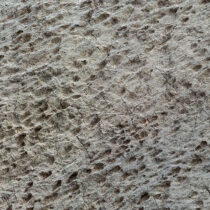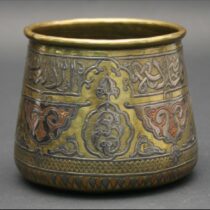Significant finds emerged during a rescue excavation conducted by the Ephorate of Antiquities of Phthiotida and Evrytania near Lake Kifisida (Kopais) in Boeotia, 6 km north of the Sanctuary of Apollo Ptoios and ancient Akraephia. The rescue excavation was initiated due to the construction of a photovoltaic park.
A cemetery dating from the Archaic and Classical periods and architectural remains of a fortified settlement from the same era were discovered. The site is marked on old maps as “Spitia-Katavothra”. The cemetery is arranged in clusters and consists of pit graves, cremation burials, and tile-covered graves. The excavation is ongoing, but from the forty (40) graves examined so far, it is evident that the inhabitants of this lakeside settlement were landowners of high social status and wealth.
The Lady with the Inverted Diadem
Particularly striking is the “Burial of the Lady with the Inverted Diadem”, dated to the second half of the 7th century BC. The burial is part of a cluster of three pit graves. According to preliminary analysis of dental remains, the noblewoman’s burial belongs to an adult woman who was between 20 and 30 years old at the time of her death. An elaborate bronze diadem was found carefully placed on her head. The diadem is band-like and has a large rosette at the center of the forehead shaped like a sun, symbolizing the woman’s high status and authority.
The diadem was made using the repoussé technique and features facing pairs of heraldic lions—male and female—which strongly symbolize royal power and authority. However, the diadem was found placed upside down, with the lions positioned supine and the battle ornament at the bottom. In modern symbolism, an inverted royal crown signifies abdication or the fall of a monarch and, in any case, represents the loss of power and status.
The noblewoman’s burial is chronologically placed within the transitional sociopolitical context of the mid-7th century BC, a time when the traditional hereditary monarchy was collapsing, and the rise of aristocratic elites was leading to the dominance of oligarchy and aristocratic rule in the following period. The woman’s high office, prestige, and wealth are evidenced by the numerous bronze grave goods.
The wealth of the grave goods is remarkable. Among them there are two oversized Boeotian-type buckle with engraved geometric horse motifs, a necklace with a large vessel-shaped pendant, bone and ivory beads, amber ballot beads, laminated rosettes, bronze earrings, bracelets, and spiral rings worn on every finger joint.
In the same cluster of graves, the burial of a young girl around four years old was found, crowned with a bronze diadem with inset rosettes. This burial also dates to the early Archaic period and was richly furnished with jewelry similar to that of the noblewoman, possibly indicating a familial relationship between them.
Other graves also yielded significant finds, such as a female burial from the mid-6th century BC, which was accompanied by a “Siana type” kylix with a depiction of roosters, and a trefoil oinochoe decorated with mythical creatures and the god Hermes as “Psychopompos”. Bronze bossed phialae, black-figure and black-glazed pottery linked to the Ceramic Workshop of Akraephia are also among the cemetery’s findings.
